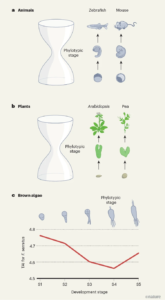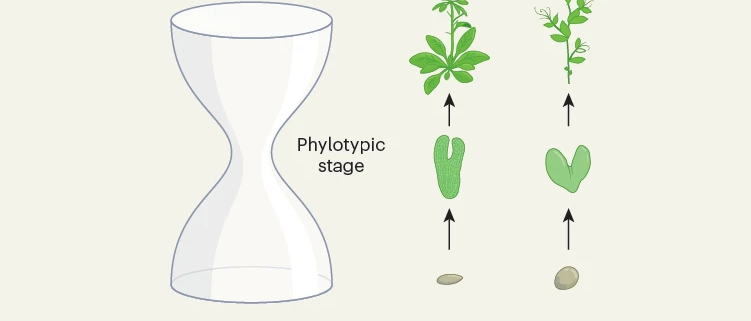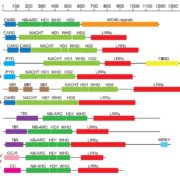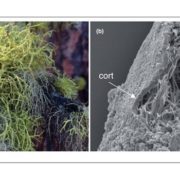The ”hourglass” model of embryogenesis extends to brown algae
 The hourglass model of embryogenesis was proposed in the 1990s, and extended to green plants and fungi in the 2010s. During animal embryogenesis, the very earliest stages (post fertilization) are morphologically quite different from each other, and the later stages are quite different, but in the middle of embryogenesis there is a period, called the phylotypic period, at which the appearance of animal embryos converge and look quite similar. This pattern of morphological diversity resembles the shape of an hourglass, broad at the top and bottom and narrow in the middle. The phylotypic period is the period during which the basic body plan of the organism is established. Interestingly, during the phylotypic period, there is also a narrowing of patterns of gene expression, and a shift toward the expression of evolutionarily older, more highly conserved genes. In a new paper, Lotharukpong et al. found evidence for this hourglass model of development in another type of multicellular organism, the brown algae, which became multicellular independently of plants, fungi and animals. The study found that during the phylotypic period when the algal body plan was being established, younger genes were expressed less, rather than older genes being expressed more, and the more ancient genes expressed during this stage are also more pleiotropically expressed than younger genes, consistent with findings from animals and plants. (Summary by Mary Williams @PlantTeaching) Nature 10.1038/s41586-024-08059-8
The hourglass model of embryogenesis was proposed in the 1990s, and extended to green plants and fungi in the 2010s. During animal embryogenesis, the very earliest stages (post fertilization) are morphologically quite different from each other, and the later stages are quite different, but in the middle of embryogenesis there is a period, called the phylotypic period, at which the appearance of animal embryos converge and look quite similar. This pattern of morphological diversity resembles the shape of an hourglass, broad at the top and bottom and narrow in the middle. The phylotypic period is the period during which the basic body plan of the organism is established. Interestingly, during the phylotypic period, there is also a narrowing of patterns of gene expression, and a shift toward the expression of evolutionarily older, more highly conserved genes. In a new paper, Lotharukpong et al. found evidence for this hourglass model of development in another type of multicellular organism, the brown algae, which became multicellular independently of plants, fungi and animals. The study found that during the phylotypic period when the algal body plan was being established, younger genes were expressed less, rather than older genes being expressed more, and the more ancient genes expressed during this stage are also more pleiotropically expressed than younger genes, consistent with findings from animals and plants. (Summary by Mary Williams @PlantTeaching) Nature 10.1038/s41586-024-08059-8










